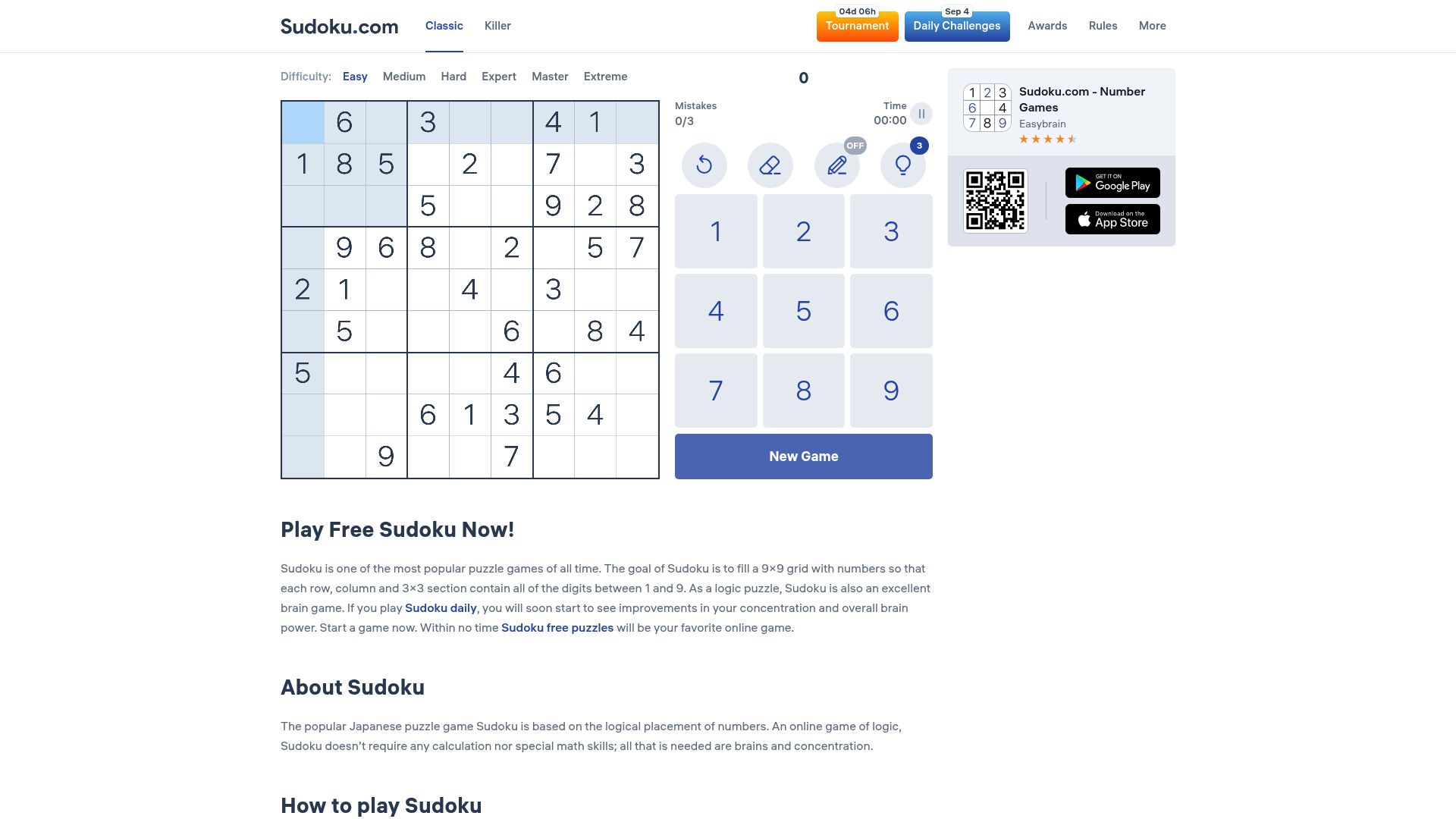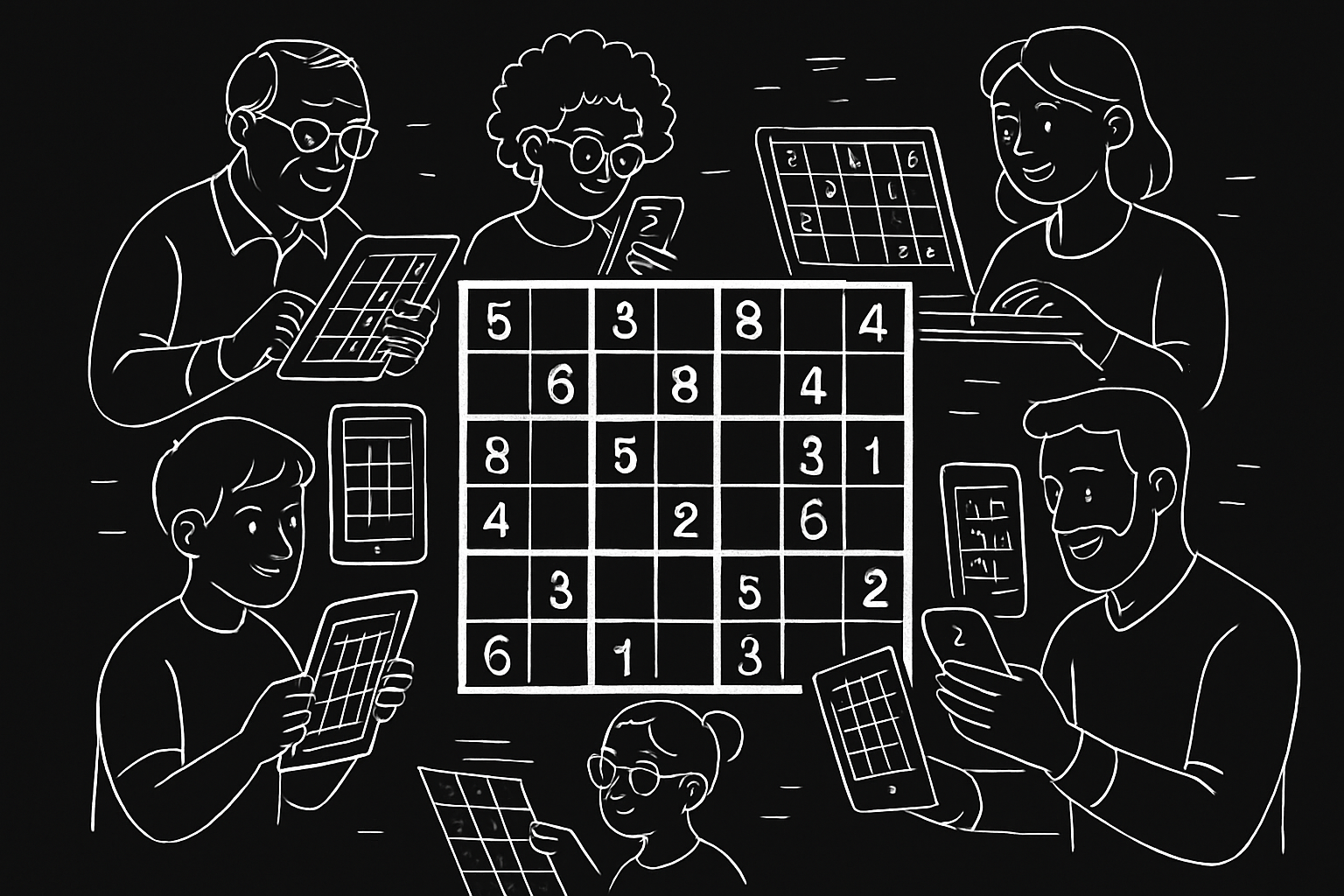Ever stared at a Sudoku grid, convinced there’s a hidden trick you’re missing? You’re not alone—many puzzle fans have wondered if there’s a secret formula to solve any sudoku, no matter how tough it looks.
In this complete guide, you’ll discover step-by-step strategies that actually work. We’ll walk you through the basics, reveal logical solving techniques, introduce advanced methods, share tips for boosting speed and accuracy, and help you sidestep the most common mistakes.
Ready to unlock the logic behind every puzzle and experience the thrill of cracking even the hardest grids? Let’s dive in and master Sudoku together.
Understanding Sudoku: Rules, Variants, and the Puzzle’s Appeal
Ever wondered why millions try to solve any sudoku puzzle every day? Let’s step back and explore where Sudoku began, why it’s so beloved, and what makes it more than just a numbers game.
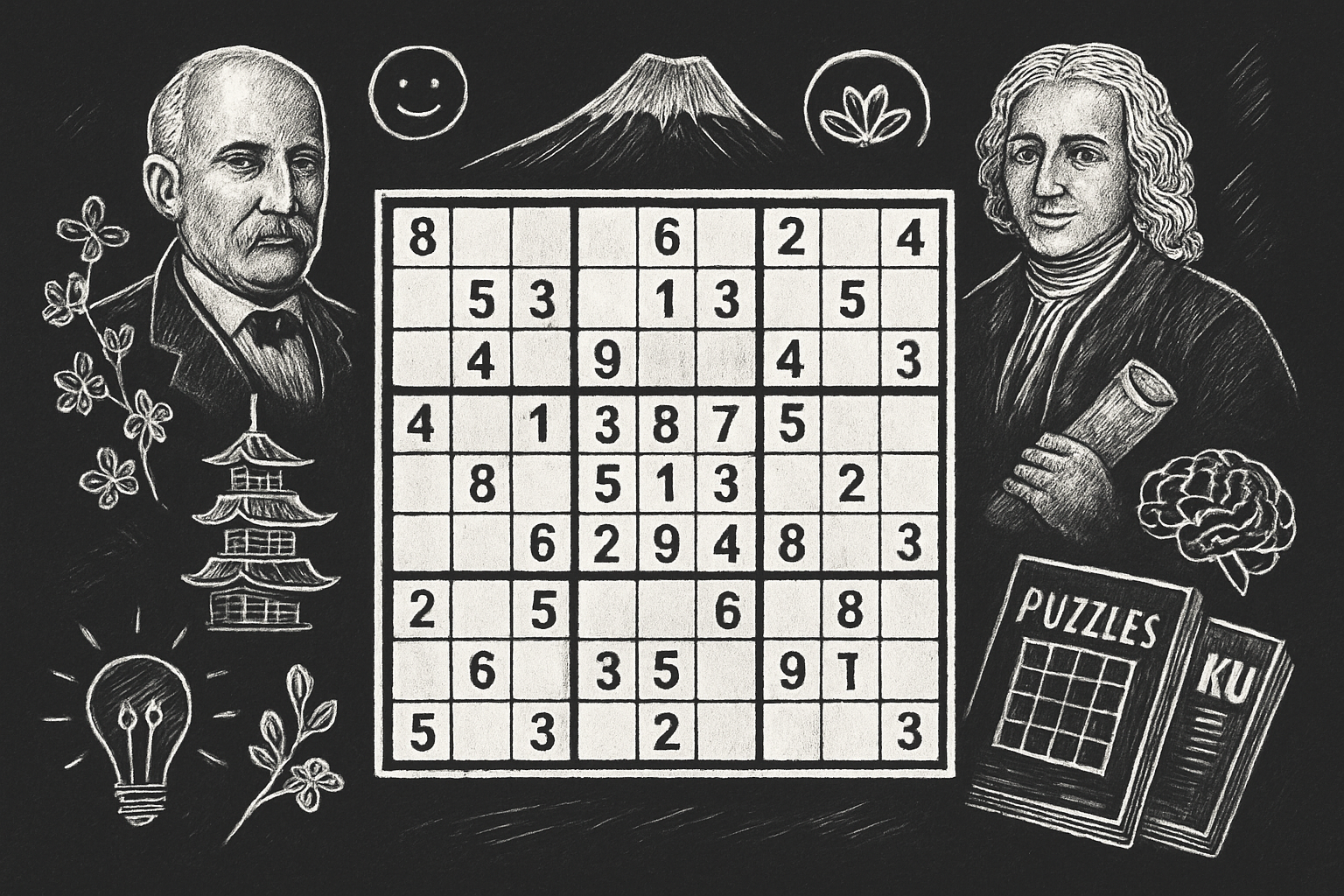
What is Sudoku? Origins and Global Popularity
Sudoku’s story starts in 18th-century Switzerland, where mathematicians created number placement puzzles. The modern version emerged in Japan during the 1980s, gaining its name from “Su-doku,” meaning “single number.” By the 2000s, Sudoku went global, featured in newspapers and apps everywhere.
Over 200 million Sudoku books have sold worldwide, showing just how many people want to solve any sudoku challenge. Its universal appeal lies in its accessibility—anyone can play, no matter their age or background.
Core Rules and Grid Structure
At its core, to solve any sudoku, you work with a 9×9 grid divided into nine 3×3 boxes. The goal? Fill every cell so each row, column, and box contains the digits 1 to 9, with no repeats.
Rows run left to right, columns top to bottom, and boxes are the bolded squares. Here’s a quick breakdown:
| Element | Description |
|---|---|
| Row | Horizontal line |
| Column | Vertical line |
| Box | 3×3 sub-grid |
This structure is what makes every attempt to solve any sudoku both logical and satisfying.
Main Sudoku Variants
Sudoku isn’t just one puzzle. There are many ways to solve any sudoku, thanks to creative variants:
| Variant | Unique Feature |
|---|---|
| Classic | Standard 9×9 grid |
| Killer | Cages with sum clues |
| Samurai | Overlapping grids |
| Hyper | Extra highlighted regions |
| Mini | Smaller grids (e.g., 6×6, 4×4) |
For example, Killer Sudoku adds “cages” where the numbers must sum to a given total, adding a new twist to how you solve any sudoku.
Why People Love Sudoku: Cognitive Benefits
People around the world love to solve any sudoku not just for fun, but for brainpower. Regular play can boost memory, sharpen logic, and improve concentration. Even better, it’s a relaxing way to de-stress after a long day.
Research suggests that puzzles like Sudoku may even help keep your brain younger. According to Sudoku or Crosswords May Help Keep Your Brain 10 Years Younger, engaging in these puzzles can enhance cognitive function and support mental health.
Common Myths and Misconceptions
Let’s clear up some common misconceptions about how to solve any sudoku:
- “It’s all about math.” In truth, Sudoku relies on logic, not calculations.
- “Only geniuses can finish hard puzzles.” Anyone can learn the strategies to solve any sudoku, regardless of experience.
- “There’s only one way to approach it.” In reality, multiple techniques exist, from basic to advanced.
Sudoku is for everyone—no secret code required, just a willingness to think logically and have fun.
Essential Tools and Setup for Solving Any Sudoku
Before you can solve any sudoku, setting yourself up for success is key. The right tools, environment, and methods can make even the trickiest grid feel manageable. Let’s break down what you need.
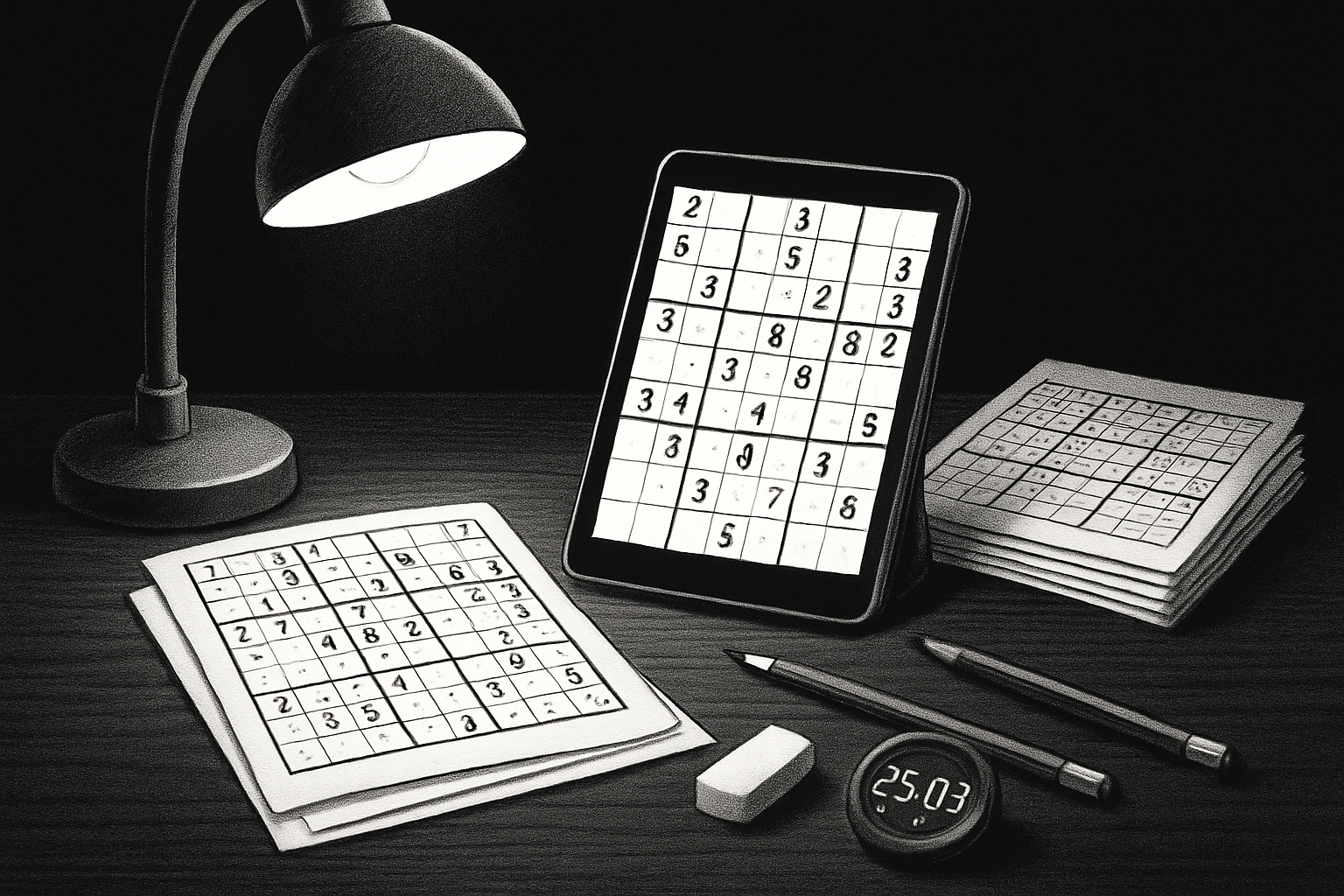
Choosing the Right Puzzle and Difficulty Level
To solve any sudoku, start by picking a puzzle that matches your skill level. Sudoku puzzles are usually labeled as Easy, Medium, Hard, or Evil. The grading affects which strategies you'll need. Easy puzzles rely on basic logic, while Hard or Evil ones require advanced techniques.
Here’s a quick comparison:
| Difficulty | Typical Techniques Needed | Average Solve Time |
|---|---|---|
| Easy | Scanning, singles | 5-10 minutes |
| Medium | Pairs, simple elimination | 10-20 minutes |
| Hard | Chains, advanced eliminations | 20-40 minutes |
| Evil | X-Wing, Swordfish, guessing | 40+ minutes |
If you’re new, begin with an Easy puzzle. As you build confidence, you’ll be ready to solve any sudoku, no matter the difficulty.
Tools of the Trade: Digital vs. Paper
Your choice of tools shapes your solving experience. Some love the tactile feel of paper and pencil, while others prefer the convenience of digital apps. Paper allows for free-form notes and erasing, but apps often include features like pencil marks, hints, and undo buttons.
Many top-rated Sudoku apps also track your progress and offer brain training benefits. In fact, brain training apps, games and puzzles can enhance brain health, making digital tools a smart option for those looking to solve any sudoku while boosting cognitive skills.
Setting Up Your Workspace for Focus
A focused environment helps you solve any sudoku efficiently. Find a quiet spot with good lighting and minimal distractions. Use a comfortable chair and keep your workspace organized with all your tools—pencil, eraser, timer, and puzzle—within easy reach.
If you’re solving digitally, mute notifications and close unrelated tabs. A tidy, ergonomic setup lets you concentrate fully on the grid.
Notation and Pencil Marks: Your Secret Weapon
Pencil marks are a game-changer if you want to solve any sudoku with accuracy. Use light marks to jot down all possible candidates for each cell. As you eliminate possibilities, update these marks immediately.
For example, if a cell in the top row could be 2, 4, or 7, write those numbers lightly. When one is ruled out, erase it. Consistent notation keeps your logic clear and reduces errors.
Time Management and Tracking Progress
To improve and solve any sudoku faster, track your progress. Use a timer or log your solve times for each difficulty level. Many apps provide statistics, but a simple notebook works too.
Average solve times differ by difficulty, so set personal goals and watch your improvement. Tracking helps you spot patterns in your mistakes and strengths, making every session a step forward.
Step-by-Step: Core Sudoku Solving Techniques
Feeling stuck and wondering how to solve any sudoku, even when the grid looks impossible? These step-by-step techniques will help you break down the puzzle, spot hidden numbers, and make logical progress—every single time.
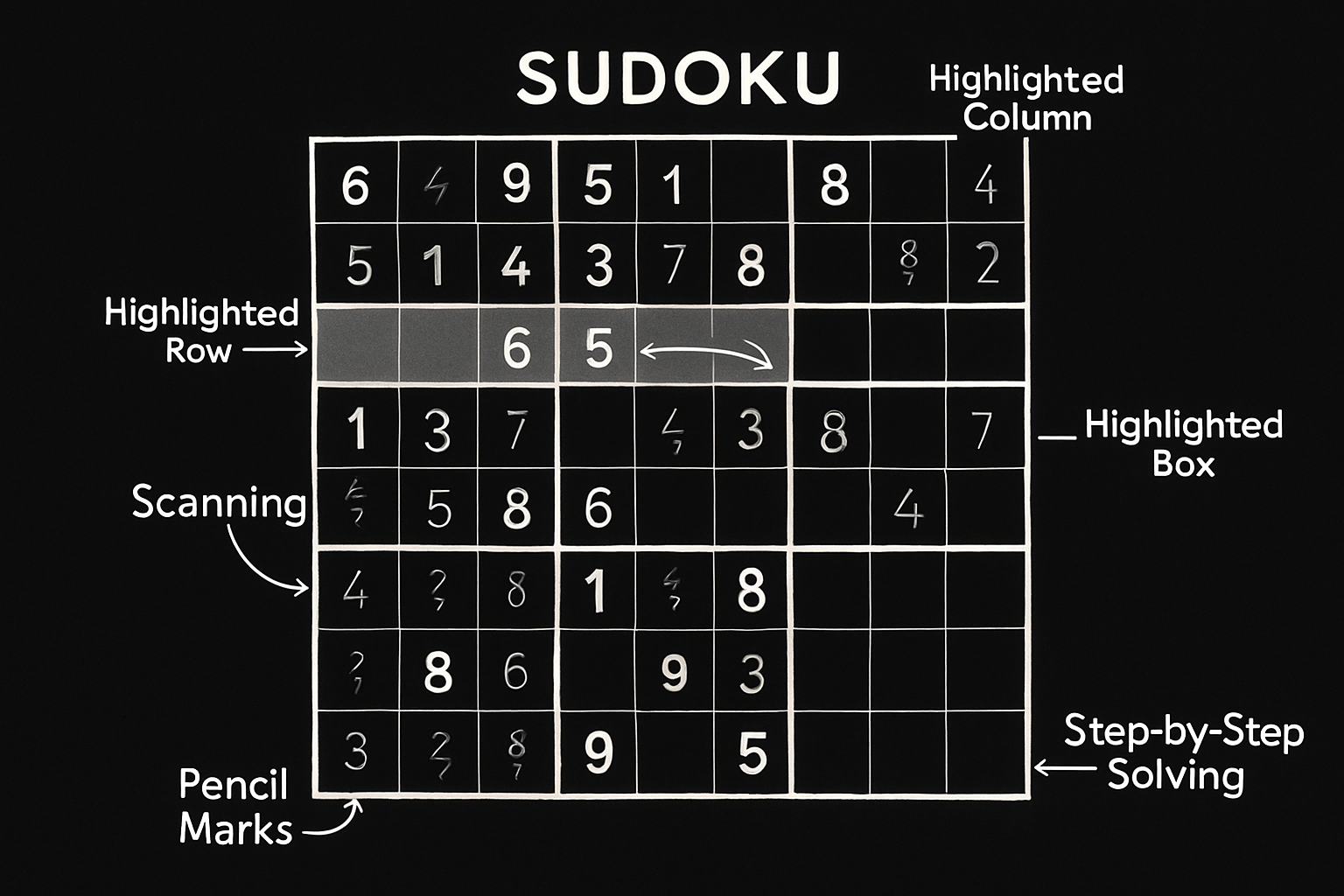
Scanning and Crosshatching: The Foundation
To solve any sudoku, start with the basics: scanning and crosshatching. Scanning means looking at each row, column, and box to see which numbers are already placed. By cross-referencing these, you can quickly spot where certain numbers can and cannot go.
Try this: Pick a number (say, 5). Scan each row and column in a 3×3 box. Where do 5s already exist? Crosshatch by mentally blocking off those rows and columns. The intersection points often reveal the one possible location for that number.
- Use a finger or pencil to guide your eyes as you scan.
- Mark off impossible spots lightly.
- Focus on one number at a time for clarity.
These simple habits lay the groundwork to solve any sudoku, even before advanced strategies come into play.
Filling in the Obvious: Naked Singles and Hidden Singles
After scanning, look for naked singles and hidden singles—the bread and butter to solve any sudoku.
- Naked singles: When a cell has only one possible candidate left, place it!
- Hidden singles: Sometimes, a number appears only once as a candidate in a row, column, or box—even if other numbers are possible in that cell.
Step-by-step cell analysis:
- List all candidates for each empty cell.
- Identify any cell with just one candidate (naked single).
- For hidden singles, check each row, column, and box for a number that appears as a candidate in only one cell.
Spotting singles is a powerful, logical first step to solve any sudoku and builds momentum for the trickier moves ahead.
Pencil Marks and Candidate Elimination
Pencil marks are your secret weapon if you want to solve any sudoku efficiently. These tiny notes in each cell track which numbers could possibly fit, helping you visualize options at a glance.
Here’s how to use them:
- After every number placement, update pencil marks in the affected row, column, and box.
- Erase candidates that are now impossible.
- Use small numbers in the corners of each cell (on paper) or app features for digital puzzles.
For example, if you place a 7 in row 2, instantly remove 7 as a candidate from all other cells in that row, column, and box.
Sudoku experts and even researchers analyzing advanced solving techniques using SAT and SMT solvers (see Evaluating SAT and SMT Solvers on Large-Scale Sudoku Puzzles) rely on candidate elimination as a core part of their solving process.
Block and Column/Row Interactions (Pointing Pairs/Triples)
To solve any sudoku with more finesse, learn to spot pointing pairs and triples. These patterns help eliminate candidates and reveal hidden placements.
- Pointing pair/triple: If a number can only go in one row or column within a 3×3 box, you can eliminate that candidate from the corresponding row or column outside the box.
Example:
If two cells in a box (say, box 1) both allow for a 3 and both are in row 2, then 3 cannot appear in any other cell in row 2 outside that box.
Identifying these interactions refines your candidate list and helps you solve any sudoku by uncovering placements that aren’t immediately obvious.
Box-Line Reduction and Locked Candidates
Box-line reduction (also called locked candidates) is another essential trick to solve any sudoku, especially as puzzles get tougher.
Here’s how it works:
- If a candidate appears only in one row or column within a box, you can remove that candidate from the rest of the row or column outside the box.
Visual example:
Suppose the number 6 appears as a candidate only in the first column of a 3×3 box. You can safely erase 6 as a candidate from the rest of that column, outside the box.
This process of elimination is key to uncovering hidden singles and narrowing down complex possibilities as you solve any sudoku.
Introduction to More Complex Patterns: Pairs and Triples
Ready to solve any sudoku with even tougher logic? Enter naked pairs/triples and hidden pairs/triples.
- Naked pairs/triples: Two or three cells in a row, column, or box contain the same two or three candidates—and nothing else. These numbers can be eliminated from all other cells in that unit.
- Hidden pairs/triples: Two or three numbers appear only in the same two or three cells within a unit, even if those cells have other candidates.
Spotting these patterns:
- Scan for cells with matching candidates.
- Use a table to track candidates if needed.
- Eliminate extra candidates from those cells (for naked pairs/triples) or from the rest of the unit (for hidden pairs/triples).
These advanced moves help you solve any sudoku with confidence, even when the grid seems stuck.
Practice Example: Solving an Easy Puzzle Step-by-Step
Let’s put it all together and solve any sudoku using these core techniques.
Step-by-step process:
- Start with scanning and crosshatching to fill in easy placements.
- Identify naked singles and hidden singles.
- Add pencil marks to all empty cells.
- Use candidate elimination after every placement.
- Watch for pointing pairs/triples and locked candidates.
- Look for naked/hidden pairs or triples as the grid fills.
- Repeat the process until the puzzle is complete.
By practicing this routine, you’ll soon be able to solve any sudoku, from the simplest to the most challenging, without guesswork.
Advanced Strategies for Solving Difficult Sudoku
Ready to tackle the toughest puzzles? If you want to solve any sudoku, mastering advanced strategies is essential. These techniques go beyond the basics, unlocking solutions in grids that seem unsolvable at first glance. Let’s dive into the step-by-step methods experts use to crack even the most fiendish sudoku challenges.
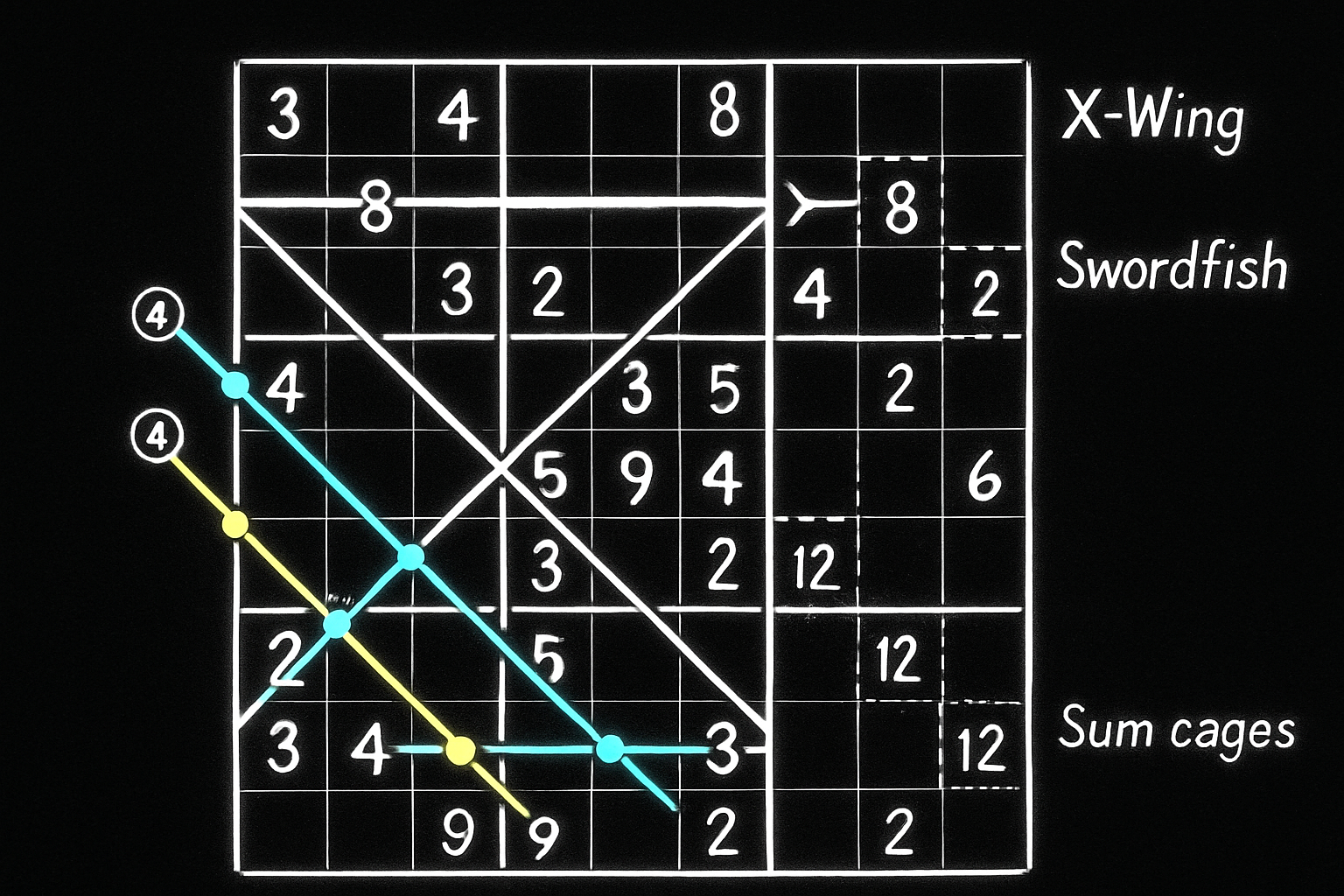
X-Wing, Swordfish, and Fish Patterns
When you want to solve any sudoku on the hardest settings, fish patterns are game-changers. The X-Wing is the most common: look for two rows (or columns) where a candidate appears only twice, and those candidates line up perfectly in two columns (or rows). Eliminate that number from the rest of those columns or rows.
Swordfish takes the concept further—imagine three rows and three columns forming a “net” of possible placements. These patterns help you spot eliminations invisible to basic scanning.
| Pattern | Rows/Cols Involved | Difficulty |
|---|---|---|
| X-Wing | 2 | Medium |
| Swordfish | 3 | Hard |
| Jellyfish | 4 | Expert |
For example:
If 5 can only be in columns 2 and 6 in rows 1 and 4, then all other 5s in columns 2 and 6 can be eliminated from those rows.
As sudoku evolves, researchers are exploring new ways to solve any sudoku, such as Solving Sudoku Using Oscillatory Neural Networks, which applies cutting-edge neural models to crack the toughest grids.
Coloring and Chain Techniques (Simple Coloring, XY-Chain)
Coloring techniques are visual tools to trace candidate numbers through the grid. Simple coloring assigns two colors to a candidate, like blue and green, marking their possible spots. If two of the same color appear in the same unit, that color is invalid, and you can eliminate those candidates.
XY-Chains are a bit trickier. They link cells that share pairs of candidates, creating a chain across the grid. If the chain loops back, you can often eliminate a candidate from any cell that “sees” both ends of the chain.
- Simple coloring: Good for eliminating single candidates.
- XY-Chain: Best for breaking stubborn deadlocks.
- Tip: Draw connecting lines or use colored pens when solving on paper.
With these techniques, even if you feel stumped, you can still solve any sudoku by untangling complex webs of possibilities.
Forcing Chains and Guessing (When All Else Fails)
Sometimes, logic alone doesn’t reveal the next step. That’s when forcing chains and controlled guessing come in. Forcing chains test what happens if you place a certain candidate in a cell—follow the chain of consequences to see if it leads to a contradiction or a solution.
- Forcing chain: “If I put 3 here, then 5 goes there, so 7 must be here…”
- Guessing (Trial & Error): Place a candidate, continue solving. If you hit an error, backtrack.
Guessing should be a last resort. Overusing it can make it harder to solve any sudoku, as too many wrong turns lead to confusion. Instead, use it sparingly, and always keep track of your steps so you can easily reverse if needed.
Recognizing and Breaking Deadlocks
Deadlocks happen when no logical moves remain. To solve any sudoku, you need to recognize these situations quickly. Signs of a deadlock include repeating numbers in a row or no valid candidates for a cell.
Efficient backtracking is your friend. When you realize you’re stuck, retrace your steps to the last logical placement. Use pencil marks and notes to remember where you took a risk or made a guess.
Example:
- Mark the cell where you guessed.
- If a conflict arises, erase back to that point.
- Try the alternative candidate.
This method keeps your grid clean and your solving process efficient, so you don’t get lost in a maze of errors.
Killer Sudoku and Other Variant-Specific Strategies
To truly solve any sudoku, you’ll need strategies for variants like Killer, Samurai, and Hyper Sudoku. Killer Sudoku uses sum cages—groups of cells that must add up to a specific number, with no repeats.
- Sum cage logic: If a cage totals 10 and contains two cells, only (1,9), (2,8), (3,7), or (4,6) are possible.
- Samurai Sudoku: Overlapping grids require tracking multiple puzzles at once.
- Hyper Sudoku: Extra regions add another layer of constraint.
For Killer Sudoku, jot down all possible combinations for each cage. As you fill in numbers, cross off impossible sums. The more you practice, the better you’ll get at adapting your approach to each variant and learning how to solve any sudoku, no matter the twist.
Practice Example: Solving a Hard Puzzle with Advanced Techniques
Let’s put it all together. Imagine a hard puzzle where basic methods stall. Start by scanning for X-Wings in rows and columns. If you spot one, eliminate candidates accordingly.
Next, search for coloring opportunities. If a simple coloring pattern eliminates a candidate, fill it in and update your pencil marks. If the grid is still stuck, try building an XY-Chain or look for a Swordfish pattern.
If you hit a deadlock, backtrack to your last logical move. For Killer Sudoku, check if a sum cage now has only one possible combination left.
By combining these advanced strategies, you’ll build the confidence and skill to solve any sudoku—even the ones that once seemed impossible.
Tips for Speed, Accuracy, and Ongoing Improvement
Want to solve any sudoku faster and with fewer mistakes? With the right techniques and a little practice, you can see real progress. Let’s break down practical tips to boost your speed, sharpen your accuracy, and keep the sudoku journey fun and rewarding.
Building Speed Without Sacrificing Accuracy
Speed comes from confidence and familiarity with patterns. Start by scanning the entire grid quickly to spot obvious singles and easy placements. Use pencil marks to narrow choices in tricky spots.
Try timing yourself and gradually reduce your solve time. But remember—accuracy always trumps speed. Rushing often leads to errors that slow you down in the long run. If you want to solve any sudoku efficiently, build the habit of double-checking placements before moving on.
Some quick tips for faster solving:
- Practice the scanning technique daily.
- Use keyboard shortcuts if playing online.
- Group similar steps to avoid jumping around the grid.
Developing Your Own Solving Routine
Every puzzler has a unique approach. Some prefer filling boxes first, others scan rows or columns. Experiment to find a routine that feels natural and helps you solve any sudoku with less mental effort.
A typical routine might look like:
- Scan for naked singles across all rows.
- Mark candidates in empty cells.
- Focus on the most filled boxes or rows.
- Revisit pencil marks after every placement.
Adjust your sequence as you gain experience. Consistency in your routine leads to fewer mistakes and smoother progress.
Tracking Progress and Setting Personal Challenges
Keeping track of your sudoku stats can be both motivating and insightful. Record your solve times, note down mistakes, and set personal goals. Many sudoku apps and websites offer leaderboards and progress logs to help you stay motivated. For example, the World Puzzle Federation hosts global competitions and tracks top scores.
Here’s a simple way to log your progress:
| Date | Puzzle Level | Time (min) | Mistakes |
|---|---|---|---|
| 2024-06-01 | Medium | 8 | 1 |
| 2024-06-02 | Hard | 15 | 2 |
Regular tracking helps you see patterns, spot areas to improve, and makes it easier to solve any sudoku at higher levels.
Practicing with Purpose: How to Get Better at Sudoku
Improvement comes from purposeful practice. Don’t just rush through puzzles—take time to review your mistakes and understand where you went wrong. Try new variants or harder levels to stretch your skills.
Join online communities or friendly competitions to stay inspired. Discussing strategies with others is a great way to discover new techniques. The more you challenge yourself, the more likely you are to solve any sudoku with confidence and speed.
Avoiding Burnout and Keeping Sudoku Fun
Solving puzzles should energize you, not feel like a chore. Mix up your practice by trying mini or killer sudoku variants. Take breaks between tough puzzles to keep your mind sharp.
Remember, the goal is to enjoy the process as much as the solution. If you ever feel stuck, step away and return with fresh eyes. This approach keeps your motivation high and helps you solve any sudoku with renewed enthusiasm.
Common Mistakes and How to Avoid Them
Struggling to solve any sudoku can be frustrating, especially when small errors slip in unnoticed. Even experienced players make mistakes that can derail a puzzle. Recognizing these pitfalls is the first step to more consistent success.
The Most Frequent Errors in Sudoku Solving
Many stumble on the basics. Misreading rows or columns, duplicating numbers in a box, or skipping logical steps can cause headaches. For example, a common error is placing the same number twice in a row—often missed until late in the game.
- Double-check every placement.
- Pause if you feel stuck.
- Review your grid after each move.
These simple habits can help you avoid errors as you solve any sudoku.
Over-Reliance on Guessing
Relying too much on guessing is tempting but risky. Guessing without logical deduction leads to dead ends and frustration. If you must guess, do so carefully and track your moves.
- Limit trial and error.
- Use logical elimination first.
- Mark guesses distinctly.
Logical thinking is the surest path to progress.
Ignoring Pencil Marks or Not Updating Candidates
Pencil marks are your best tool to solve any sudoku efficiently. Forgetting to update them after placing a number leads to confusion and errors. Outdated notes can make you miss clear opportunities.
- Always update candidates after every placement.
- Erase marks that are no longer valid.
- Use different symbols or colors if possible.
Keeping your pencil marks current will boost your accuracy and confidence.
Rushing and Losing Focus
Trying to solve any sudoku too quickly often results in mistakes. Rushing can cause you to overlook obvious placements or misinterpret the grid. Staying focused is key.
- Take regular breaks.
- Work in a quiet environment.
- Double-check moves before committing.
A calm pace leads to better results and fewer errors.
Learning from Mistakes: Review and Reflection
Every incorrect move is a learning opportunity. After finishing a puzzle—successfully or not—review your process. Where did things go wrong? Did you skip a step?
Many find it helpful to join online forums or communities, such as SudokuWiki, to discuss strategies and learn from others. Reflection leads to continuous improvement.
When to Start Over and When to Persevere
Sometimes a grid is beyond saving. If you spot multiple conflicts or can't backtrack, it may be time to restart. On the other hand, minor errors can often be fixed with patience.
- Restart if duplicate numbers appear in several boxes.
- Persevere if the mistake is isolated.
- Use previous experience to guide your decision.
Knowing when to reset is an essential skill as you solve any sudoku.
Now that you’ve got all these new strategies, tips, and a clearer understanding of how Sudoku works, why not put your skills to the test? The best way to master anything is by practicing, and you’ll learn so much more by tackling puzzles in real time. Whether you’re a beginner or ready to take on tougher grids, you’ll find plenty of variety and challenge. Let’s keep the momentum going—Play Sudoku Online! and see how far your new knowledge can take you. I’ll see you on the leaderboard!

